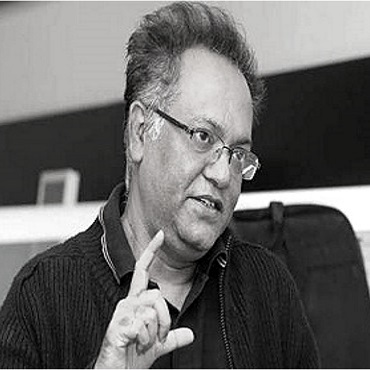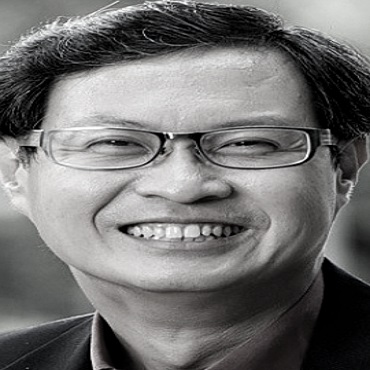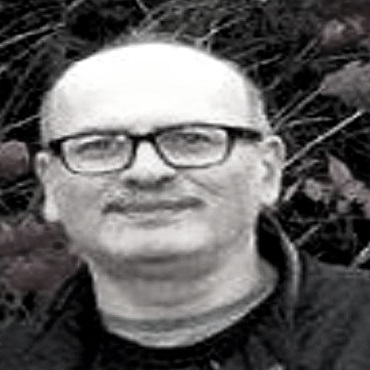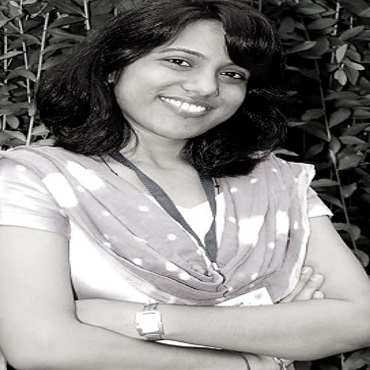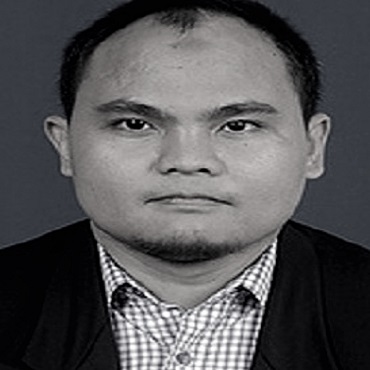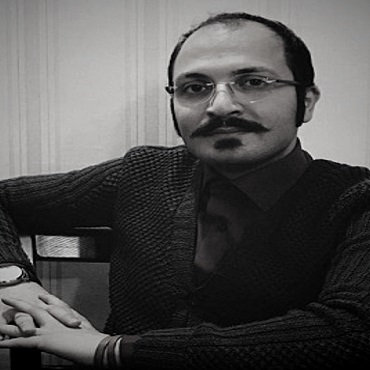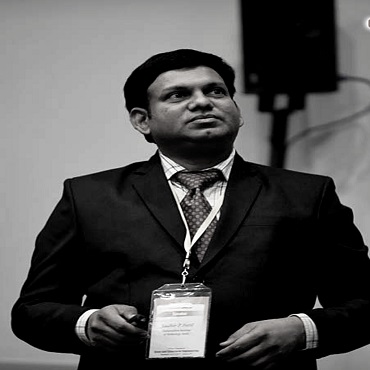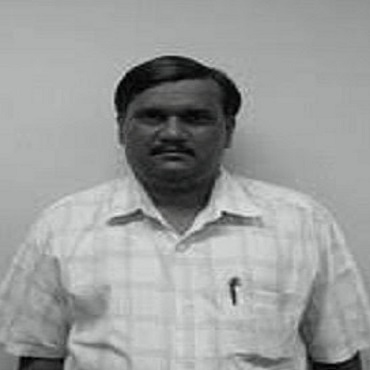
Structural Design 2019

Theme: Enriching Creativity and Improving Thought Process in Structural Design and Infrastructure Evolution
Meetings International welcomes all the experts and researchers working in the sector of Structural Engineering, Civil Engineering, Construction and related sectors around the globe to the upcoming International Conference on Structural Design and Infrastructure Developments (Structural Design-2019) during November 27-28, 2019 Dubai, UAE. This Structural Design 2019 conference will bring together world-class Structural engineers, Civil engineers, Architectural Engineers, researchers, Professors and Environmentalists to discuss developments and technological advances in Structural engineering, Infrastructure developments, Environmental sustainability, and Architecture.The scope of International Conference On Structural Design and Infrastructure Development will gather all the structural engineers and construction department professionals to discuss and exchange their ideas for the better development in the construction techniques and infrastructural development.
Importance:
This Structural Design 2019 Conferences is based on the theme “enriching creativity and improving thought process in structural design and infrastructure evolution” will make the perfect platform to commence new networks for global networking to reunite renowned speakers, researchers, business persons across the globe to a most exciting and memorable scientific event filled with much enlightening interactive sessions, Keynote Presentations, plenary Sessions, Young Researcher Forum (YRF) Presentations, Industry-Academia Interactive Sessions, world-class Exhibition and Poster Presentations.
Targeted Audience:
Academic Professionals
Civil Engineers
Structural Engineers
Architects
Geotechnical Engineers
Geologists
Earthquake Engineering Researchers
Architects
Geotechnical Engineers
Geologists
Earthquake Engineering Researchers
The Organizing Committee Members of Structural Design 2019 are looking forward to see you in Dubai.
Session 1: Structural Engineering and Structural Designing
The analysis and design of the structures such as buildings, roads, bridges, dams, reservoirs, canals, tunnels etc., and the selection of suitable member size, shape, and the properties of the material known as Structural Engineering. Structural Designing refers to the finding of the safe and economical specifications of any structure or structural member and to check the stability, strength and rigidity to resist the loads and stresses and make it durable.
Structural Design Conference | Infrastructure Development Conference | International Conference on Structural Design and Infrastructure Development |Symposium on Structural Design | Infrastructure Development Workshop | World Congress on Concrete and Concrete Structures and Concrete Technology | Architectural Engineering Summit | Steel Structures and Framework Conference | Earthquake Engineering Meetings.
Session 2: Analysis and Design of On-shore and Off-shore Structures
On-shore structures are the one which are constructed by excavating foundation under the earth’s surface and the offshore structures are those which are installed under the water for production, transmission of electricity, oil, gas and other natural resources. The analysis, design and construction of off-shore structures is one of the most demanding tasks for the engineers. These structures are affected by the dynamic and hydrological complications.
Structural Design Conference | Infrastructure Development Conference | International Conference on Structural Design and Infrastructure Development |Symposium on Structural Design | Infrastructure Development Workshop | World Congress on Concrete and Concrete Structures and Concrete Technology | Architectural Engineering Summit | Steel Structures and Framework Conference | Earthquake Engineering Meetings.
Session 3: Structural Materials and Methods
The materials used or studied primarily for their mechanical properties, as opposed to their electronic, magnetic, chemical or optical characteristics. This can include a materials response to an applied force, whether this response is elastic or plastic, its hardness, and its strength. The construction methods such as masonry, reinforced cement concrete, pre-stressed concrete, steel structures, wooden structures are used and with many more other advanced construction techniques.
Structural Design Conference | Infrastructure Development Conference | International Conference on Structural Design and Infrastructure Development |Symposium on Structural Design | Infrastructure Development Workshop | World Congress on Concrete and Concrete Structures and Concrete Technology | Architectural Engineering Summit | Steel Structures and Framework Conference | Earthquake Engineering Meetings.
Session 4: Earthquake Engineering for Structural Designing
Earthquake engineering is a sub-branch of civil engineering that influences the life and property of all human beings. It is this science that deals with the earthquake regions and its harmful effects on the environment and provide suitable preventive measures. To develop next-generation performance-based seismic design guidelines applicable to the design of new buildings and upgrade of existing buildings, the applied technology council has started the ATC-58 project.
Structural Design Conference | Infrastructure Development Conference | International Conference on Structural Design and Infrastructure Development |Symposium on Structural Design | Infrastructure Development Workshop | World Congress on Concrete and Concrete Structures and Concrete Technology | Architectural Engineering Summit | Steel Structures and Framework Conference | Earthquake Engineering Meetings.
Session 5: Traditional Architecture vs Modern Architecture
Traditional architecture is also known as “Vernacular architecture”. It is used to define the methods of construction which uses the resources and traditions of the place to which they belong. These mainly constitutes of the common buildings that have been developed over time and usually reflect the cultural environmental and historical contexts of the place in which they evolve. Modern architecture is a architecture that has led to the simplification in structures and also to provide an attractive and appealing look with the usage of modern themes and techniques. The first styles of the modern architecture were seen very early in the 20th century but they have become popular only after the second world war.
Structural Design Conference | Infrastructure Development Conference | International Conference on Structural Design and Infrastructure Development |Symposium on Structural Design | Infrastructure Development Workshop | World Congress on Concrete and Concrete Structures and Concrete Technology | Architectural Engineering Summit | Steel Structures and Framework Conference | Earthquake Engineering Meetings.
Session 6: Steel Structure and Framework
Steel is the construction material which comprises of specific shape and chemical compositions to meet the suitable project requirements. The structural steel shapes are t-beams, i-beams, plates, channels, angles etc., Steel structures have more second moment of inertia and are very stuff in respect to their cross-sectional area and can bear more loads when compared to concrete structures. The steel structures have very attractive and pleasing look and most preferable by the architectures. These are costlier than concrete structures but require less maintenance and are more durable, having high yield strength. Grades of steel commonly used are Fe250 (Mild Steel), Fe415, 500, 550 and 600 (High Yield Strength Deformed Bars).
Structural Design Conference | Infrastructure Development Conference | International Conference on Structural Design and Infrastructure Development |Symposium on Structural Design | Infrastructure Development Workshop | World Congress on Concrete and Concrete Structures and Concrete Technology | Architectural Engineering Summit | Steel Structures and Framework Conference | Earthquake Engineering Meetings.
Session 7: Pre-Stressed Concrete(PSC) vs Reinforced Cement Concrete(RCC)
Pre-stressed concrete is a form of concrete which is pre-casted by using the high-tensile wires or tendons before the casting of concrete known as “Pre-tensioning” and the concrete member undergoes “Post-tensioning” by creating ducts in a concrete member. PSC is widely used for the large structural members to save time, energy, and to get more strength, stability, and durability. PSC members are used in metro rail projects, bridges and many other huge projects.Reinforced cement concrete is a usually used for all structures which cannot resist the stresses and loads effectively as PSC as it having low tensile strength and ductility counteracted by the reinforcement.
Structural Design Conference | Infrastructure Development Conference | International Conference on Structural Design and Infrastructure Development |Symposium on Structural Design | Infrastructure Development Workshop | World Congress on Concrete and Concrete Structures and Concrete Technology | Architectural Engineering Summit | Steel Structures and Framework Conference | Earthquake Engineering Meetings.
Session 8: Skyscrapers
Skyscraper is a very tall, multi-storeyed building, which is first came into use during 1880s. The development of skyscrapers brings the results of many technical and social development coincidences. The term skyscraper first applied to buildings of 10 to 20 storeys, but by the late 20th century the term was used to describe high-rise buildings having 40 storeys. As the population density of urban areas has increased, so there is a huge need for buildings that rises rather than spread. The skyscraper, which was originally a form of commercial architecture, has increasingly been used for residential purposes as well.
Structural Design Conference | Infrastructure Development Conference | International Conference on Structural Design and Infrastructure Development |Symposium on Structural Design | Infrastructure Development Workshop | World Congress on Concrete and Concrete Structures and Concrete Technology | Architectural Engineering Summit | Steel Structures and Framework Conference | Earthquake Engineering Meetings.
Session 9: Green Building and Environment
Green Building is a environmental responsible and sustainable structure that reduces the harmful impacts on human health and environment and has an efficient use of natural resources. The most important benefit that a green building offers to our natural environment is that it not only reduces or eliminates the harmful impacts on the environment by the efficient use of natural resources, but also have a healthy and positive impact on the environment by generating its own energy resources or increasing the biodiversity.
Structural Design Conference | Infrastructure Development Conference | International Conference on Structural Design and Infrastructure Development |Symposium on Structural Design | Infrastructure Development Workshop | World Congress on Concrete and Concrete Structures and Concrete Technology | Architectural Engineering Summit | Steel Structures and Framework Conference | Earthquake Engineering Meetings.
Session 10: Digital Design in Architecture
Digital design in architecture uses the architectural software tools like AUTOCAD, REVIT ARCHITECTURE, 3DS MAX for Preparing the plan and design of a architectural structure in a most appropriate, easy and attractive manner.Digital Design is a new take on starting architectural design, introducing digital skill sets and parametric thinking through drawing, modelling, and prototyping. The exercises starts from two-dimensional drawings and graphical compositions, to the three-dimensional spatial studies, to physical and material investigations. At each point, there is a use of computational design tools and digital information to generate, analyse the architectural design propositions.
Structural Design Conference | Infrastructure Development Conference | International Conference on Structural Design and Infrastructure Development |Symposium on Structural Design | Infrastructure Development Workshop | World Congress on Concrete and Concrete Structures and Concrete Technology | Architectural Engineering Summit | Steel Structures and Framework Conference | Earthquake Engineering Meetings.
Session 11: Safety and Security Measures at Construction Sites
The safety and security of crew and the instruments at construction sites is very essential and it needs a complete care towards it. A small negligence in safety and security can cause the huge damage to the labours and the instruments. So, safety officer is assigned at site to observe and take the preventive measures if anything happens against the proposed plan. Security guards should be available at the site to safeguard valuable construction equipment.
Structural Design Conference | Infrastructure Development Conference | International Conference on Structural Design and Infrastructure Development |Symposium on Structural Design | Infrastructure Development Workshop | World Congress on Concrete and Concrete Structures and Concrete Technology | Architectural Engineering Summit | Steel Structures and Framework Conference | Earthquake Engineering Meetings.
Session 12: Urban Planning and Policy
Urban Planning is carried out to improve and develop the existing basic facilities such as roads, buildings, communication, water supply, electricity etc., by using new development techniques.In the urban planning, on the one hand, the consolidation of a series of urban management activities that require advanced interpretation and applications can be identified. On the other hand, the demand for new urban and territorial policies that require specific professional competence is increasing.
Structural Design Conference | Infrastructure Development Conference | International Conference on Structural Design and Infrastructure Development |Symposium on Structural Design | Infrastructure Development Workshop | World Congress on Concrete and Concrete Structures and Concrete Technology | Architectural Engineering Summit | Steel Structures and Framework Conference | Earthquake Engineering Meetings.
Importance of Conference:
Structural Design 2019 endeavours a great opportunity to assemble and make new contacts in the field of construction and infrastructure development, by providing teamwork zones, along with tea, snacks and lunch for delegates between the sessions. It allows the delegates to address the views on structural engineering and infrastructure by the recognized experts and researchers across the globe who are up to date with advanced developments in this field and provide the information new techniques and plans for better development.
Global Research and Business Value:
Global Structural Engineering and market is expected to have the benefits extremely over the outlook period which is owing to rise the demand for commercial projects that requires mostly structural engineers. Governments across the globe are focussing on the development of infrastructure as there is pressure on governments from the people due to rapid population growth and they require better infrastructure in the form of roads, sewages, houses, electricity etc., According to new research report by global market, structural engineering market size is expected to reach the USD 11.27 trillion by 2025. Civil Engineering market size is expected to have attractive gains. An outlook to be worth of around USD 1.8 trillion by 2025.As per the policy developments of American Society of Civil Engineers(ASCE) referring for the better infrastructure solutions which encourages the industry growth
Civil Engineering Universities and Research Institutions:
Universities in Dubai
- Paris-Sorbonne University Abu Dhabi
- Heriot-Watt Dubai
- American University in Dubai
- American University of Sharjah (AUS)
- University of Sharjah
- Birla Institute of Technology and Science
- University of Wollongong in Dubai
Research Institutions
- American Society of Civil Engineers (ASCE)- USA
- Institute of Transport Engineers (ITE)- USA
- Structural Engineering Research Centre (SERC)-India
- American Concrete Institute (ACI) –USA
- Australian Earthquake Engineering Society ( AEES)-Australia
- Architectural Institute of Japan (AIJ)- Japan
- American Institute of Steel Construction (AISC)-USA
- Advanced National Seismic System (ANSS)- USA
Future Prospect
A significant part of future structural engineering work will involve in the rehabilitation, reuse of existing infrastructure and sustainable structures and plays important role in interpretation, determination and leaderships in the structural design for developing future infrastructure. It is also very essential to lead the development, implementation of new technologies in structural field and also in infrastructural development. The demonstration of the structural engineers to motivate them to develop the creative and innovative solutions for both traditional and non-traditional problems.
Conclusion
In the Structural design process, it is important to determine the potential danger and its extent. Most importantly, human safety should be provided. During the architectural design, the behaviour under extreme compressive loading on the various structural elements like walls, floors, roofs, should be considered carefully. Especially in earthquake zones, and for a multi-storied building, the structure is to be designed by considering the seismic land wind loads along with other dead, live and special loads. The geological investigation including the soil bearing capacity should be find before the designing of any structure and the infrastructure development is very essential for the growth of any country providing the safe and easy approach the population of that country.
- Structural Engineering and Structural Designing
- Civil Engineering Design
- Earthquake Engineering for Structural Designing
- Analysis and Design of On-shore and Off-shore Structures
- Traditional Architecture vs Modern Architecture
- Steel Structure and Framework
- Pre-Stressed Concrete (PSC) vs Reinforced Cement Concrete (RCC)
- Skyscrapers
- Green Building and Environment
- Digital Design in Architecture
- Geotechnical Engineering & Coastal Engineering
- Safety and Security Measures at Construction Sites
- Journal of Steel Structures & Construction
9 Organizing Committee Members
9 Renowned Speakers
George Morcous
University of Nebraska-Lincoln
USA
Anita Kumari
Indian Institute of Technology Roorkee
India
Zul-Atfi Ismail
University Malaysia Perlis
Malaysia
Lakshmi kant
Indian Institute of Technology Patna
India
Mahesan Bavan
National University of Malaysia
Malaysia
Dimitris L. Karabalis
University of Patras
Greece
Abdollah Baghaei Daemei
Islamic Azad University
Iran
Sudhir P. Patil
MIT-World Peace University
India
C.K. Madheswaran
CSIR-Structural Engineering Research Centre
India





